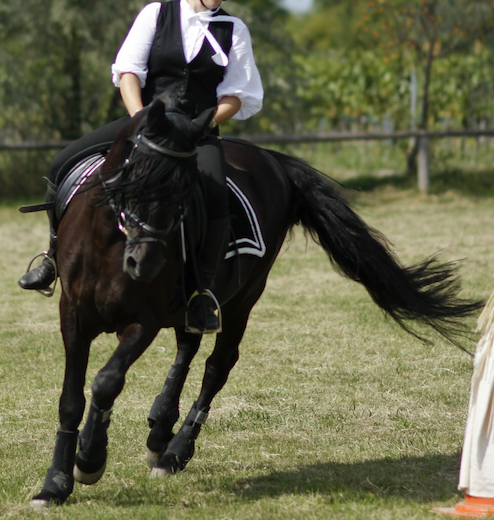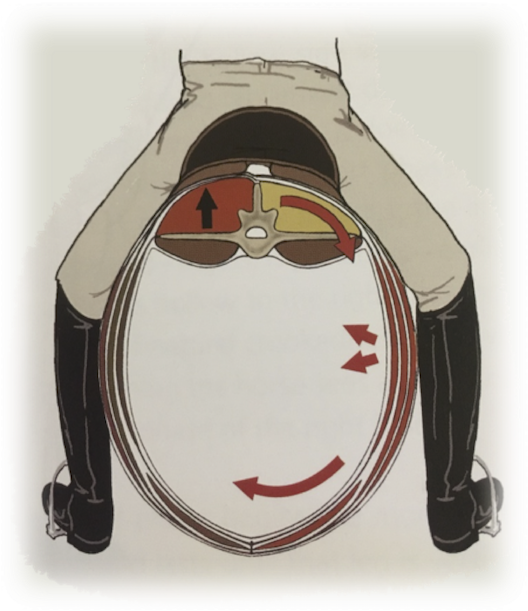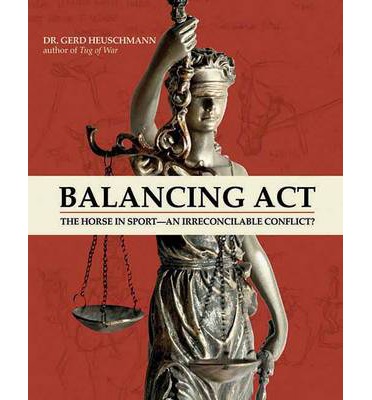What is Lateral Imbalance?
Lateral imbalance is a term used to describe a horse’s preference to work either to the left or to the right, also termed ‘natural crookedness”. It is very similar to how we, as humans, are left or right-handed. A large part of horse training is in fact focussed upon reducing the amount of lateral imbalance, so that the horse is strong, supple and comfortable working on both left and right rein.
As a horse is brought into training, we begin to notice that he is stiff working on one rein, struggling to bend and tending to cut corners, while on the other rein he is hollow, tending to over bend and “fall-in” to corners. If we train our horses in a gymnastic manner, “scaffolding” their training (i.e. setting appropriate foundations and gradually building up from that solid base), our horses should become more laterally balanced and supple over time. However, if a horse’s training regime is neither gymnastic nor appropriately progressive, their lateral imbalance may become more pronounced over time. In more extreme cases, some horses develop one side of their body’s musculature, whilst the other side remains comparatively underdeveloped. The “old school” term for lateral imbalance is rein lameness, however I seldom use this term, the exception being in cases where the horse is so laterally imbalanced as to appear lame, but without all the clinical signs of lameness that you would normally expect.
The Biomechanics of Lateral Imbalance
*For the purpose of our understanding, I am going to refer to a horse that is hollow right, but the principles apply the same to a horse that is hollow left*
In a horse that is hollow right, the horse’s off side abdominal muscles are stronger than the near side abdominal muscles and the long back muscle on the near side is tight. As a result, the horse’s trunk or barrel shifts to the near side, causing the rider to tip to the off side. The rider’s left leg is consequently placed into greater contact with the horse’s trunk which has twisted towards the near side and there is a corresponding reduction of contact between the rider’s right leg and the off side of the horse’s trunk, making it feel like the horse is “running away” from the inside leg. To exacerbate things, the tension in the horse’s near side long back muscle causes tightness throughout the muscle chain all the way down to the stifle. Tension in the near side stifle results in a reduction in length of stride in the near side hind, which shows up as either irregularity during turns and around corners, or in the case of significant tension, an un-diagnosable lameness.
In a horse that is hollow right, the horse’s off side abdominal muscles are stronger than the near side abdominal muscles and the long back muscle on the near side is tight. As a result, the horse’s trunk or barrel shifts to the near side, causing the rider to tip to the off side. The rider’s left leg is consequently placed into greater contact with the horse’s trunk which has twisted towards the near side and there is a corresponding reduction of contact between the rider’s right leg and the off side of the horse’s trunk, making it feel like the horse is “running away” from the inside leg. To exacerbate things, the tension in the horse’s near side long back muscle causes tightness throughout the muscle chain all the way down to the stifle. Tension in the near side stifle results in a reduction in length of stride in the near side hind, which shows up as either irregularity during turns and around corners, or in the case of significant tension, an un-diagnosable lameness.
I have had calls from clients who have been “vetted-out” of competitions due to “un-diagnosable lameness”, but upon assessment, lateral imbalance is the only problem, with no other signs of lameness present. These are the less common cases that I refer to as “rein lame” horses, as discussed earlier.
The S-Shaped Horse
Often, riders try to deal with a hollow horse by pulling back on the opposite rein in an attempt to “straighten” them. When this sort of riding continues for a prolonged period, the horse becomes so tight at the poll that it eventually becomes easier for the horse to flex towards the pulling hand and S-shaped horse results. In a hollow right horse, this means that while the body is hollow right, the head position is hollow left, i.e. the horse is bent right in the torso but flexed left at the poll. The result is a gait pattern that is very difficult to explain and exceptionally difficult to correct.
If you are looking to purchase a horse and notice that they work in an S-shape, my recommendation is to steer clear. If your horse is already S-shaped, you will most likely need to commit to re-establishing gaits and movements from the foundations up, combined with regular physical therapy to gradually and consistently release long-term tension so that the horse is able to retrain their body to work correctly.
Biomechanical Training for Lateral Balance
*The following exercises can be taught / performed regardless of your discipline or whether you prefer to work your horse under saddle, in-hand or at liberty.*
- At the most basic level, it is essential that you do not pull back on the reins, hold the reins tightly, “block” the horse with the hands or allow the horse to “lean” into the reins. Pulling results in counter-pulling, which leads to unnecessary tension in the horses musculature.
- Allow the horse to move forward. It is most desirable for the horse to move forward with rhythm, suppleness and impulsion, yet it is common for us to want to block such forward, swinging movement and slow things down. To overcome this, work on developing an independent seat and hands and learn to follow the movement of the horse with your pelvis. If you are fearful of the horse’s forward activity, work on this with an instructor before you get into the habit of consistently blocking the horse’s forward motion.
- Train your horse systematically and only progress training when the horse is physically ready. Lateral imbalance is exacerbated in horses that are elevated into false collection through artificial means, rather than through correct training.
- Practicing short periods of two-track and lateral work regularly during your training sessions is one of the best ways to overcome lateral imbalance. Just make sure that you don’t overdo it, as a fatigued horse will cease to perform the activity in a way that engages their muscles appropriately and they may become stressed or bored.
At the most basic level, leg yield is one of the easiest two-track exercises for your horse, encouraging suppleness while also increasing the strength of the abdominals and the hind legs as they bear weight under the horse’s body. Shoulder-in is an even more effective exercise (for horses that are ready). Shoulder-in opens up the rib cage and increases suppleness in the trunk, while again strengthening the abdominals and hind legs.
I hope that this article has increased your understanding of lateral imbalance, how your horse’s body works and the importance of proper riding to correct natural crookedness rather than worsen it. If you need help, seek the advice of an expert who can step you through the process of training your horse correctly or resolving biomechanical issues.
If you are interested in finding out more, I recommend Dr Gerd Heuschmann’s book, “Balancing Act”, which can be purchased through both Amazon and Book Depository.



